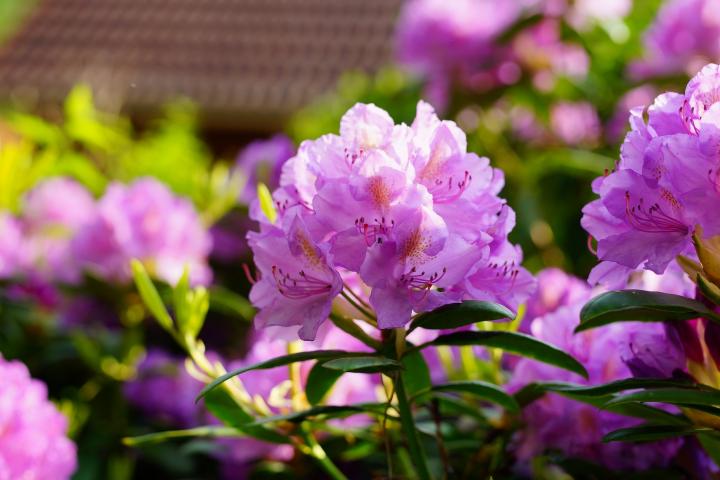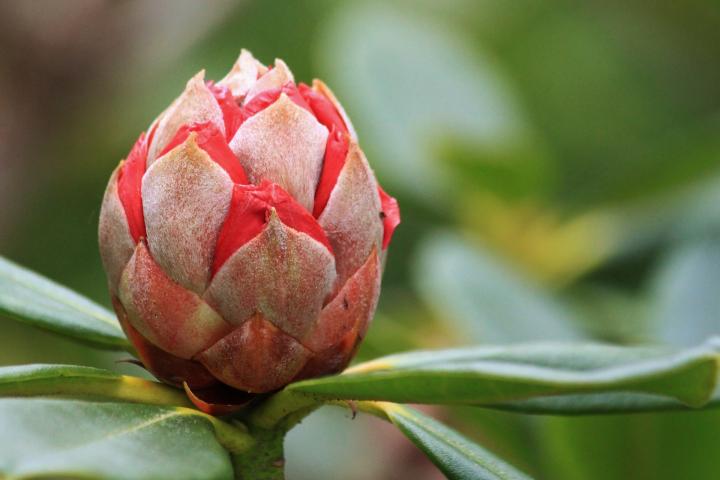
Caption
Rhododendrons are popular among gardeners with their evergreen shrubbery and early blooms.
Planting, Growing, and Pruning Rhododendrons and Azaleas
Read Next
Types
There are more than 900 species in the Rhododendron genus, which vary greatly. It would take a whole book to understand this wide world!
You may be interested in joining the American Rhododendron Society, which runs a database with information on more than 2,000 rhododendrons and azaleas. On an annual basis, the society selects a number of rhododendrons to be awarded the Rhododendron of the Year designation, highlighting the best-performing plants for different regions.
Here is a handful of varieties that we think you’ll enjoy:
- ‘Blue Diamond’ is a dwarf evergreen rhododendron that grows to 3 feet. It blooms mid-season with violet-blue flowers. Zones 7 to 9.
- ‘Cecile’ is a vigorous azalea that grows to 7 feet and produces dark salmon-pink buds in mid-season. Zones 5 to 8.
- ‘Hydon Dawn’ is a low-growing rhododendron that actually tolerates full sun. Pale pink flowers bloom in mid-season. Zones 7 to 9.
- ‘Nova Zembla’ is an evergreen rhododendron that grows 5 to 10 feet tall and bears bright red flowers in late midseason. Zones 5 to 8.
- ‘Rosy Lights’ is an azalea that offers extra cold hardiness. It grows to 6 feet and bears deep purple-pink flowers. Zones 3 to 8.
- ‘Purple Gem’ is a dwarf rhododendron that grows to 2 feet and is an early-season bloomer. It bears small, light purple flowers. Excellent in front of a border or in a rock garden. Zones 5 to 8.
Gardening Products
Hi Deb,
Since the issue with your rhododendron leaves seem to happen every spring, it sounds like you are dealing with winter injury. Rhododendrons lose water through their leaves in winter during times when it is warm and sunny. Since the ground is frozen, the roots are not able to take up enough water in the soil to make-up for what is lost through the leaves. There are a few ways to prevent winter injury, including adequate watering during the growing season.—about an inch a week—and especially in the fall to give your rhododendrons what they need for the winter. You also want to avoid fertilizing after mid-September because it may delay dormancy.
Periods of high winds can also cause winter injury and protection from winds can help prevent damage.
It really depends on how dry or wet your part of the state has been and is expected to be. If you get plenty of rain in August and September, and temperatures cool off, then the plants should be fine, assuming they are planted in the ground. If they're in containers, they will likely need some extra watering if conditions are dry.
- « Previous
- 1
- 2
- …
- 10
- Next »












Comments